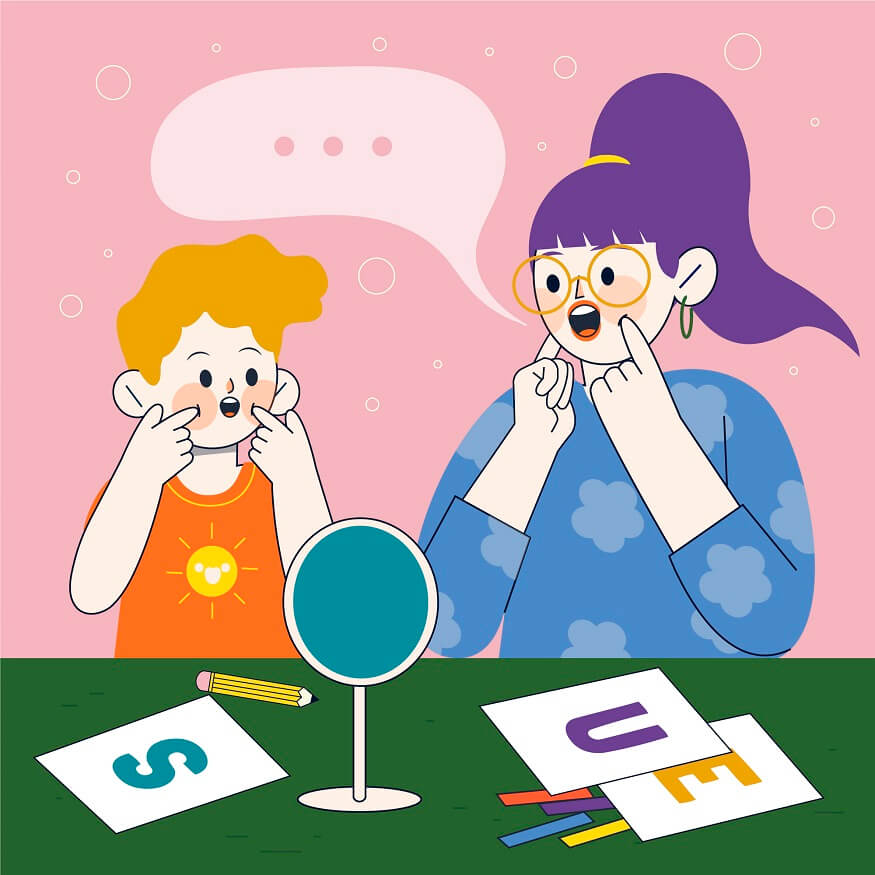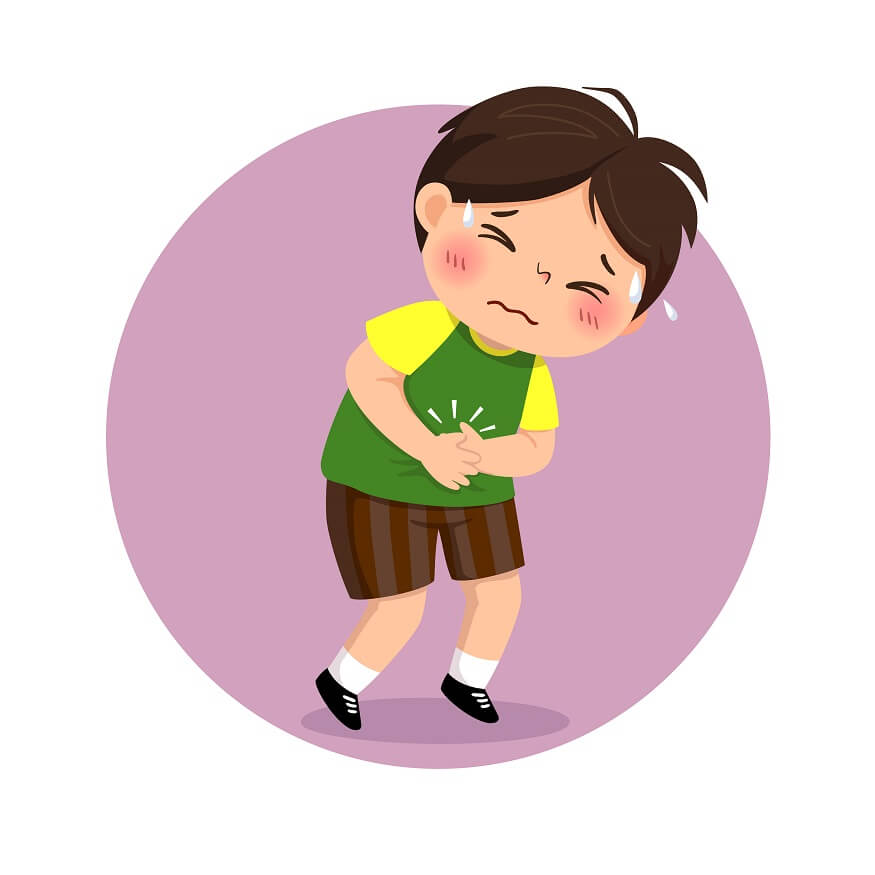A lisp is a common speech disorder that impairs a child’s capability to articulate particular sounds accurately. It is characterised by the incorrect pronunciation of sibilant sounds, such as ‘s’ and ‘z’, where the tongue is pushed forward or laterally, resulting in a ‘th’ sound. This article will analyse the causes, categories, and remedies for lisping in children.
Also Read: Speech Disorders In Kids: Causes, Symptoms, And Treatment
Causes of Lisping
Lisping, a disorder of the way a person pronounces ‘s’ and ‘z’ noises, can be traced back to a variety of sources:
Physiological Factors: Structural malformations like tongue thrust (the thrusting of the tongue against or between the front teeth) and dental problems, such as misaligned teeth or a gap between them, can contribute to the occurrence of a lisp.
Habitual Factors: Certain behaviors acquired during infancy, including sucking one’s thumb or using a pacifier, might change the way the tongue lies when not in use and affect the shape of the mouth, potentially inducing a lisp.
Neurological Factors: Neurological issues, including cerebral palsy, can lead to lisping due to the individual’s lack of control over muscle movement in the tongue and mouth. Such problems can make it challenging for the affected person to enunciate correctly.
Developmental Factors: In certain situations, a lisp can merely be part of a child’s normal language progress. Many kids lisp as they learn to verbalise and then typically outgrow it as their speech aptitudes evolve.
Hearing Impairment: One might discover that certain kids who suffer from hearing impairment may manifest a lisp due to their incapacity to distinguish accurately between their misconstrued enunciation and the correct form.
It is imperative to bear in mind that infantile lisping, particularly in those aged five and below, is an everyday occurrence and should consistently not induce distress. Yet, if a child’s stammer continues to exist after this period or is impairing their capacity to convey themselves, it would be judicious to seek guidance from a speech and language therapist.
Also Read: 10 Ways to To Improve Your Children’s Speech at Home
Types of Lisp
Lisping can be classified into four primary types, each with its distinct characteristics:
Interdental Lisp: Also known as a frontal lisp, this is the prevailing species of lisp. It transpires when the tongue protrudes between the front incisors while attempting to produce the ‘s’ or ‘z’ sounds, causing these pronunciations to bear semblance to a ‘th’.
Dentalised Lisp: During speech, the tongue pushes against the front teeth in order to produce this particular variety of lisp. Much like the interdental variety, the ‘s’ and ‘z’ sounds deviate and sound more like a ‘th’ or ‘d.’
Lateral Lisp: This is a type of lisp which is less widespread. When articulating the ‘s’ or ‘z’ sounds, air escapes across the edges of the tongue rather than through the middle. This can cause the sounds to be slushy or distorted.
Palatal Lisp: The rarest kind of lisp, a palatal lisp arises when the center of the tongue interacts with the velvety-smooth palate (the smooth component of the ceiling of the mouth near the rear) while attempting to emit ‘s’ or ‘z’ sounds. The resulting noise often comes out garbled or fuzzy.
Every variety of lisp necessitates a slightly different treatment approach. A speech and language pathologist can identify the type of lisp and assemble a fitting plan of action. Addressing a lisp often necessitates expert intervention and distinct activities to aid a kid in acquiring the aptitude to position their tongue accurately while verbalising.
Also Read: Stammering in Children and Toddlers: Causes & Treatment
Solutions for Lisping
Addressing a lisp typically involves professional guidance and specific exercises to help a child learn to position their tongue correctly when speaking. Here are some of the potential solutions for managing and correcting a lisp:
Speech and Language Therapy: This is regarded as the foremost treatment for lisping. Speech and language therapists are specialists who can assess the child’s speech and provide bespoke exercises to enhance articulation. They advise the youngster to comprehend and change the way they are making noises, concentrating on precise tongue position and articulatory proficiency.
Self-Monitoring and Practice: As youngsters get older, they can take a proactive role in mending their lisp by self-assessment, recognising when they reverse syllables and furthermore making attempts to exact the incorrect utterance. Normal rehearsal of correct pronunciation can also be advantageous.
Positive Reinforcement: Celebrate and compliment the child when they make headway in their articulation. This positive reinforcement can construct their self-assurance and motivate them to persist in refining their accent.
Addressing Underlying Issues: Habitual behaviour, such as thumb-sucking or tongue-thrust, must be dealt with in order to deal with the lisp. If dental issues are present, a dentist or orthodontist may be of assistance in rectifying them.
Tools and Techniques: There are multiple tools and approaches that can be employed to help a kid to overcome a lisp. Utilising mirrors is a great way to illustrate to a child how they are setting their tongue when producing speech sounds.
Support at Home and School: The backing of guardians, educators, and others is essential in aiding a child to surpass a lisp. Consistent drill in the home and a tolerant milieu in school can help the child sense more content and self-assured as they tackle their articulation.
Also Read: Ways to Develop and Improve Public Speaking Skills in Kids
Remember, overcoming a lisp takes time, and each child’s pace of progress will be different. It’s important to remain patient, consistent, and supportive throughout the process.
Conquering a lisp requires patience, and each individual’s speed of advancement will vary. It is imperative to sustain forbearance, steadiness, and encouragement all along the journey. It is critical to remember that each youngster is distinct, and the period of progress may differ. Staying the course and having perseverance during the venture is indispensable. Though lisping in kids can be a worry, with appropriate remedial activities and aid, it can be successfully regulated or eradicated. If you have any queries regarding your child’s speech development, it is always advisable to seek advice from a healthcare specialist or a speech and language therapist.
Also Read: What is Blended Learning? | Types, Examples
The material featured on this website should not be perceived as a substitute for professional medical advice. EuroSchool leans towards you seeking advice from a qualified healthcare expert concerning any health matters that may come up. This website’s intent is not to diagnose, treat, heal, or stop any illness.
EuroSchool is devoted to giving a comprehensive education to each and every child, in spite of their individual capability. We believe that every child can learn and develop, and strive to devise an all-inclusive milieu where all students feel invited and assisted.











